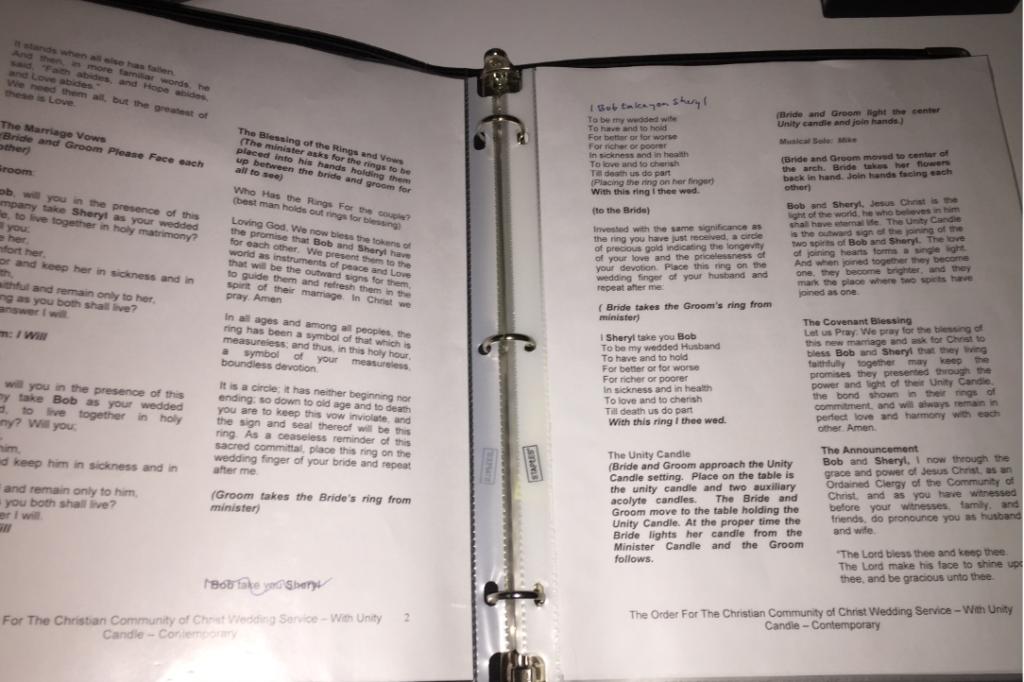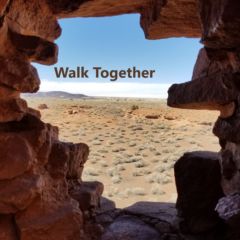“If I was ever going somewhere, I was running!”
Forrest Gump
Now you wouldn’t believe me if I told you, but I could run like the wind blows. From that day on, if I was ever going somewhere, I was running!
As we discussed in parts I and II, you have spent time in your “thin place” seeking the heart of God. You have walked in the light of God’s Word as revealed in your living situation as you visited the “flight line” of your people. Now Sunday’s coming! In today’s blog, we will discuss how to run with your sermon come Sunday!
A few years ago, we visited a local church one Sunday where the pastor wore shorts and sandals, something like you would wear to a barbecue. We sat pretty close to the front. The worship service start time came and went. An elderly woman from the senior home next door timidly asked,”Excuse me, Reverend, my watch shows that it’s time to begin.”
The pastor stared her down and snapped, “Not according to my watch.” And continued to saunter around like he had no place to be. When he did realize it was time to start, he walked over to the choir room, snapped his fingers, whistled and commanded the choir out of their hiding place, “Come on, let’s go!”
Needless to say, my wife and I gave the pastor an “Irish Goodbye.” We stood, said nothing and walked past a few not too surprised deacons as we exited the service. As I still drive by the retirement home, I think about those captive old-timers who have no other choice but to endure Sundays there.
Head to Heart
“We don’t rise to the level of our expectations, we fall to the level of our training.”
Archilochus (Frequently credited to an anonymous US Navy Seal)

Or as heard from sports coaches, “You play like you practice.” The movement of a sermon begins in the head then moves to the heart. Assuming you have a two or three page outline or manuscript of your sermon, Saturday night is the time to read aloud the Bible passage two or three more times and practice looking at the people while reading the phases. Listen and mark for emphasis.
There is a huge difference between writing for reading versus writing for speaking and hearing. This is a pitfall of many a sermon. Pen in hand, read your sermon aloud as though you were preaching it. Edit for sound effect. Does your text translate well to the ear? If not, mark it through as you go. These edit notes are for you.
Recommended format for preaching notes: Two columns with text 14 point
The two columns allow room for emphasis and edit notes. The 14 point font size make for a quick use in the pulpit if you need to fall back to notes. One way to preach without notes, its to uses notes as a security blanket, like the harness used for rock climbing.
For years I have used used a presentation binder with vinyl sheet protectors.


If you’ve ever lost a page of sermon notes or mixed up the order, you can thank me later. If you preach enough, you will surely lead a service in a windy cemetery or under a busy ceiling fan and watch your notes blow away like leaves on a autumn day … an unnerving start of your message.
Sod’s law: ‘When you toss a coin, the more strongly you want heads, the more likely it is to come up tails’
Applying Sod’s Law, a best practice is to email yourself Sunday’s message and formatted Bible passage. Should you forget or lose your binder, you can either print the copy at church or use a smart phone or tablet to download your copy.
First Contact
Now you have moved your message from your head to your heart. Your outline or manuscript is captured both in your binder and in the cloud. Your first contact at the church on Sunday can set the tone for the rest of the services.
Arrive early with expectation – Something is happening here. God is with us! This is not a show or a game. It is encountering the presence of God.
Do a quick walk around campus. Ask the custodian to check that the coffee is on and that the restrooms are open and well supplied. Applying Sod’s Law, the day you think you have your best sermon will be the Sunday with no paper in the restroom. You will be the first to hear of it and asked by your elder deacon to personally restock it now.
Do a mic check. use new batteries. Your sermon is worth it.
Prepare for technical difficulties. The best sermon can be tanked with when the projector bulb fails at the start of your service. Expect technology to fail you and roll with it. In my last church, the sanctuary’s video and sound control booth was caged in another building. A tiny speaker broadcast to the operator what was heard in the sanctuary. During one funeral, the facility manager was recording the service and running the slide projection, when an audio feedback filled the sanctuary with a heavy-metal like screech at the level of a jet aircraft. I made a visual gesture to the camera that remained unseen. I had no choice but to announce to the grieving congregation, “Excuse me, I’ll be right back.” As I stepped out on the sidewalk, I saw the facilities manager looking back at me out of the other door. My sign language confirmed – “Pull the plug!”
Check in
Check in with your musicians. Your music and choir members are your fellow ministers. A moment sharing a smile and good word breeds goodwill that will continue through the service and beyond. Tell them how glad you are to serve with them. Praise your choir leaders for their choice of music and song.
In contrast, avoid any hint of accusing a musician with a pastor’s righteous indignation, “I didn’t approve the choice of that song, and I am striking it from the bulletin today. Don’t you ever do this again without my approval.” Word of these pre-service arguments will squelch the spirit of your choir and worship team.
This would be good time to return to your office and pray for the people. Sunday mornings before services are not the time to be on-call for listening to the woes and complaints of church members. You want to be listening to the voice of God.
Look ‘Em in the Eye and Tell ‘Em What You Got!
The first step of preaching to the people ... is that you must like the people.
People have the innate ability to tell whether the pastor likes them. My first piano accompanist’s father was an Episcopal priest. His wife used to pray for him that”the people would like him, so that they would like his message.” Too many clergy treat other staff members, music people and church members as obstacles in the way of their message.
You may say, “Jim, how could that be true?”
- The answer is do you actively listen to your people?
- Do you welcome their opinion of value?
- Do you promote and encourage them?
One of the values of working a separate career as an insurance adjuster is learning how people desperately need encouragement.
Eye Contact
I once knew a pastor who shook hands with the people as they left church. But you learned that as he shook your hand, he looked down the line for someone he didn’t want to miss. Your eyes are the handshake with the congregation.
Make eye contact for a few seconds before your begin the service.
Make eye contact for a few seconds before you begin your message.
Make eye contact for a few seconds when you want your people to get the point.
Are you with me or have you gone home yet?
Crossing Over … barriers between you and the people
Pews corral in the people.
Aisles isolate the saints.
Pulpit cages the clergy.
The banister quarantines the choir.
I knew a Catholic priest who, during funerals, would step down from the chancel and put his hand on the casket on level with the people as he spoke to the congregation and family about what a wonderful wife and mother she was. The steel casket and flowers formed a separation layer, but the pastor’s touch made a human connection crossing the barrier.
One effective Baptist evangelist I knew mastered crossing over. This evangelist held a concurrent career singing country music in Branson, Missouri. His voice resonated like a combination of Marty Robbins and Elvis Presley. At the close of one service, as he called the people to the altar, he stepped out from behind the pulpit, crossed the front isle, stood on the first pew and made eye contact with those seated on the back row of the packed church. He appeared like a sea captain on the bow of some ancient ship peering through the fog in search of land.
The people streamed forward to recommit their lives to Christ as they realized that, even hidden on the back rows, God knew all about and cared for them.
You may not stand on a pew at your next service, but you might try walking up into an isle. A word of caution: crossing over does not replace “flight line” visits with your people during the week. A pastor’s “flight line” includes the home, hospital, surgical center, care center, golf course, camping trip, retreat, conference, fraternal organization, mission trip, workplace and entertaining in your home.
A pastor’s “flight line” includes the home, hospital, surgical center, care center, golf course, camping trip, retreat, conference, fraternal organization, mission trip, service project, workplace and entertaining in the home.
An example – Karen served as a Senior Deacon. Her late husband, JD, would join Karen and me at her private care home for home Communion. As part of crossing over ministry, the church recorded its services on DVDs and provided home players to be delivered on home visits. Here you see the ripple effect of a crossing over ministry that involved, the choir, musicians, pastors, church staff, and visiting pastor. These types of ministry extends the impact of your preaching and ministry beyond the four walls of your church. Not shown is my trying to diagnose a stubborn DVD/TV connection. In this photo, you can see Karen’s joy at the clear picture and sound as she felt part of the worship experience and that her church remembered her.
Trying to shake hands with every parishioner every Sunday, coming in and going out, may actually distract them from their encounter with God. The evangelist described a few paragraphs above ate dinner in a different home each night of the revival where he laughed and prayed and cried with the families. A trustworthy message is built in the home visit and not in the handshake on Sundays. As my wife and I visited over a dozen churches and faith groups in the Verde Valley, we received a few canned welcome letters with no personal visit, with the exception of two young missionaries from The Church of Jesus Christ of Latter-day Saints. We can learn something from them.
A trustworthy message is built in the home visit and
not in the handshake on Sundays.
The most effective pastor I knew in using crossing over is Rev. Jud Souers, Pastor Emeritus of The Church at Litchfield Park, Arizona. I have seen him glide like a cat from the chancel out into the isle and look back on the chancel as though he were carrying on a dialogue between the people and God. For decades, he demonstrated the same fluid movement through his golf swing as a member of the local club for decades. For Pastor Jud, the local golf club served as his Jacob’s Well place of meeting the people.
The Lazarus Ending – the sermon that ends … and then ends again … and again
The Lazarus Ending goes like this – The pastor hints that time is late but there’s just one more point to consider. “Oh, wait, I remembered you really need to know … ” Following the benediction and closing hymn of five verses, you’re ready to leave. But wait. “Lazarus, come forth! …” The pastor, out of some need to prove her message was important, gives the people a summary of what she said in the sermon.
This sends the message, “Just in case you weren’t listening the first time …”
Lest we focus too hard on the clergy, for churches that don’t have music directors, you are now set free to sing only a few verses of a closing hymn.
Why are congregations held hostage to singing all 13 verses of Amazing Grace as though some ancient hall monitor demands they sing all verses?
Start White Hot
Listen to a few Johnny Cash songs. They start strong and hot out of the box. Some churches start their worship service like a late opening at the Department of Motor Vehicles. The only think lacking is a number dispenser.
A white hot start would feel something like the introduction of the series Chef’s Table … something is about to happen.
Schedule the Unexpected
In your sermon, give space for the “impromptu moment” for the Holy Spirit to lead and surprise. Expect the Spirit to come down … welcome this. In my first church, in the middle of an evening message. A 6’4″ young man entered the back of the sanctuary and slowly shuffled up the center isle asking aloud, “Can I find God here? … Can I find God here?”
I paused my message, realizing the message came to me. “Yes,” I announced, “You have come to the right place. You can find God here!”
Later I learned that he was a patient of the Arizona State Mental Hospital. His parents told me he would scale the barbed wire fence and wander off into the desert in search of some peace for his soul.
One Easter Sunrise in the main courtyard, church members will remember as I stood to deliver the Easter morning message, all the sprinklers clicked on then off for a half second. Not enough to soak them but enough raise the question, “Will they turn back on?”
I made eye contact with the people and broke the damp silence with, “Well … you done been baptized!”
Leave Them Wanting More
Start Two Minutes Early.
Be Meaningful.
Be Brief.
Save Fill-in-the Blank Notes for the Classroom.
Leave ‘Em Wanting More.
The Gift – take and do
In the sermon shown on Vimeo [password is grace4you], you can see where both pastor and people “crossed over” barriers: the people, in response to my prior sermon calling them to a prayer shawl ministry, crossed over the front isle and placed their prayer shawls on the prayer rail for dedication. In January 2018 I received my own prayer shawl in the hospital during my kidney cancer surgery. The prayer shawl kept me warm and reminded me of God’s presence during those long nights. I am thankful for my cousin, Karen, who first shared with me the prayer shawl ministry of her church. This ministry I shared as a gift with my congregation.

What gift will you give to your people that they can take and do?
Therefore we also, since we are surrounded by so great a cloud of witnesses, let us lay aside every weight, and the sin which so easily ensnares us, and let us run with endurance the race that is set before us, 2 looking unto Jesus, the author and finisher of our faith, who for the joy that was set before Him endured the cross, despising the shame, and has sat down at the right hand of the throne of God.
Hebrews 12:1,2
Run!,
Pastor Jim

